|
|
|
Sort Order |
|
|
|
Items / Page
|
|
|
|
|
|
|
| Srl | Item |
| 1 |
ID:
089984
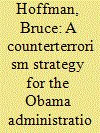

|
|
|
|
|
| Publication |
2009.
|
| Summary/Abstract |
This article assesses the scope and nature of the current terrorist threat to the United States and suggests a strategy to counter it. Al-Qaeda continues to pose the most serious terrorist threat to the U.S. today. If the September 11, 2001 attacks have taught us anything, it is that al-Qaeda is most dangerous when it has a sanctuary or safe haven from which to plan and plot attacks. Al-Qaeda has acquired such a sanctuary in Pakistan's Federal Administered Tribal Areas (FATA) and its North-West Frontier Province (NWFP) and surrounding environs. Accordingly, the highest priority for the new American presidential administration must be to refocus our-and our allies'-attention on Afghanistan and Pakistan, where al-Qaeda began to collapse after 2001, but has now re-grouped. This will entail understanding that al-Qaeda and its local militant jihadi allies cannot be defeated by military means alone. Success will require a dual strategy of systematically destroying and weakening enemy capabilities-that is, continuing to kill and capture al-Qaeda commanders and operatives-along with breaking the cycle of terrorist recruitment among radicalized "bunches of guys" as well as more effectively countering al-Qaeda's effective information operations. The U.S. thus requires a strategy that harnesses the overwhelming kinetic force of the American military as part of a comprehensive vision to transform other, non-kinetic instruments of national power in order to deal more effectively with irregular and unconventional threats. This article first discusses the scope and details of the terrorist threat today and then proposes a counterterrorism strategy for the new presidential administration. It focuses first on creating a micro approach to address the deteriorating situation in both Afghanistan and Pakistan. It then considers the requirements of a broader macro strategy to counter terrorism and insurgency.
|
|
|
|
|
|
|
|
|
|
|
|
|
|
|
|
| 2 |
ID:
183023
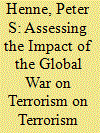

|
|
|
|
|
| Summary/Abstract |
After the 9/11 terrorist attacks, the United States called on Muslims to join it in its struggle against the attacks’ perpetrator, Al Qaeda (AQ). U.S. officials argued that Muslim states’ participation in these efforts could help the United States defeat AQ, but it could also benefit the states themselves by undermining the threat they faced from terrorism. As we are now over ten years out from the beginning of this global war on terrorism, it is possible to both ask and answer the question posed by U.S. demands: did it work? That is, did majority-Muslim states who implemented counterterrorism policies in line with America’s counterterrorism priorities benefit from this, through a reduction in the threat of terrorism? In this article, I argue that Muslim states that adopted policies in line with US priorities would accomplish their primary goal: disrupting Al Qaeda’s ability to carry out attacks. I use a quantitative analysis to demonstrate that states implementing the counterterrorism policies preferred by the United States experienced significantly fewer deaths from terrorist attacks than those that did not. These findings can contribute to debates over the global war on terrorism, as well as broad debates on effective counterterrorism and counterinsurgency tactics.
|
|
|
|
|
|
|
|
|
|
|
|
|
|
|
|
| 3 |
ID:
114985
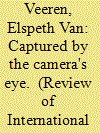

|
|
|
|
|
| Publication |
2011.
|
| Summary/Abstract |
In January 2002, images of the detention of prisoners held at US Naval Station Guantanamo Bay as part of the Global War on Terrorism were released by the US Department of Defense, a public relations move that Secretary of Defense Donald Rumsfeld later referred to as 'probably unfortunate'. These images, widely reproduced in the media, quickly came to symbolise the facility and the practices at work there. Nine years on, the images of orange-clad 'detainees' - the 'orange series' - remain a powerful symbol of US military practices and play a significant role in the resistance to the site. However, as the site has evolved, so too has its visual representation. Official images of these new facilities not only document this evolution but work to constitute, through a careful (re)framing (literal and figurative), a new (re)presentation of the site, and therefore the identities of those involved. The new series of images not only (re)inscribes the identities of detainees as dangerous but, more importantly, work to constitute the US State as humane and modern. These images are part of a broader effort by the US administration to resituate its image, and remind us, as IR scholars, to look at the diverse set of practices (beyond simply spoken language) to understand the complexity of international politics.
|
|
|
|
|
|
|
|
|
|
|
|
|
|
|
|
| 4 |
ID:
057619
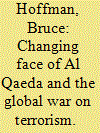

|
|
|
|
|
| Publication |
Nov-Dec 2004.
|
|
|
|
|
|
|
|
|
|
|
|
|
|
|
|
| 5 |
ID:
112789
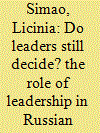

|
|
|
|
|
| Publication |
2012.
|
| Summary/Abstract |
This article looks at Russian foreign policy from the perspective of the individuals responsible for decision making. The focus on the individual level of analysis aims to shed light on the evolving dynamics of Russian foreign policymaking and complement existing analysis on the role of ideas, world views and influential groups in foreign policy analysis, with insights from neo-classical realism and constructivism. Whereas the former sees the state as the transmission belt between international power distributions and political action, the latter underlines the roles of ideas and norms to explain agency. In this context, the article is well placed to deal with the evolving relationship between leaders' views and situational constraints, including other actors involved in setting foreign policy priorities and the external environment. How are decisions taken in the context of Russia's foreign policy under President Putin and Medvedev? What is the role of the presidents from both a legal (constitutional) and a practical perspective? The article maps Russian political leaders' decisions, under Putin and Medvedev, using two case studies: Putin's decision to support the US-led post-9/11 war on terror and Medvedev's decision to go to war with Georgia in 2008.
|
|
|
|
|
|
|
|
|
|
|
|
|
|
|
|
| 6 |
ID:
083933
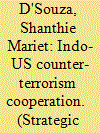

|
|
|
|
|
| Publication |
2008.
|
| Summary/Abstract |
Following the 9/11 attacks on the American homeland, India and Pakistan emerged as important states in the US-led Global War on Terrorism (GWOT). The gathering momentum in the Indo-US relations during the Clinton Presidency underwent a dramatic transformation. Although increased cooperation in defence issues is understood to have 'led' the India-US relationship to its current level, it has not culminated in enhanced counter-terrorism cooperation. This perceived lack of cooperation can be located within the perceptual differences on key security issues. This paper seeks to examine whether the upswing in Indo-US relations and claims of heightened cooperation, has led to a commensurate level of counter-terrorism cooperation between both countries.
|
|
|
|
|
|
|
|
|
|
|
|
|
|
|
|
| 7 |
ID:
121491
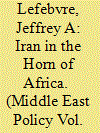

|
|
|
| 8 |
ID:
190453
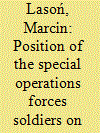

|
|
|
|
|
| Summary/Abstract |
Operations involving special operations forces are veiled in mystery, and public opinion is usually not well informed. The period of the last twenty years, beginning with the terrorist attacks of 09/11, has been no exception. But occasionally, official reports and the results of investigative journalism are published, very often criticising the actions of special operations forces soldiers. Given the secretive nature of special operations forces, researching these groups is challenging. The paper provides Special operations forces soldiers' views on the so-called global war on terrorism based on their views, observations, and experiences. There are individual opinions present in published testimonies of special operations forces members around the world. However, the research that includes a vast sample of seasoned, Polish special operations forces soldiers is an initial and original attempt to fill the gaps in the academic knowledge of the subject.
|
|
|
|
|
|
|
|
|
|
|
|
|
|
|
|
| 9 |
ID:
169166
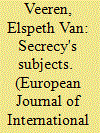

|
|
|
|
|
| Summary/Abstract |
This article sets out a framework for studying the power of secrecy in security discourses. To date, the interplay between secrecy and security has been explored within security studies most often through a framing of secrecy and security as a ‘balancing’ act, where secrecy and revelation are binary opposites, and excesses of either produce insecurity. Increasingly, however, the co-constitutive relationship between secrecy and security is the subject of scholarly explorations. Drawing on ‘secrecy studies’, using the US ‘shadow war’ as an empirical case study, and conducting a close reading of a set of key memoirs associated with the rising practice of ‘manhunting’ in the Global War on Terrorism (GWoT), this article makes the case that to understand the complex workings of power within a security discourse, the political work of secrecy as a multilayered composition of practices (geospatial, technical, cultural, and spectacular) needs to be analysed. In particular, these layers result in the production and centring of several secrecy subjects that help to reproduce the logic of the GWoT and the hierarchies of gender, race, and sex within and beyond special operator communities (‘insider’, ‘stealthy’, ‘quiet’, and ‘alluring’ subjects) as essential to the security discourse of the US ‘shadow war’.
|
|
|
|
|
|
|
|
|
|
|
|
|
|
|
|
| 10 |
ID:
084609
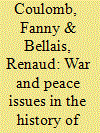

|
|
|
|
|
| Publication |
2008.
|
| Summary/Abstract |
The rising cost of the 'global war on terrorism' is pushing America defence spending to over $600 billion a year, its highest absolute level, and without a large-scale conflict.Simultaneously, many countries, especially in East Asia and Russia, have been increasing their defence budgets since the beginning of the 2000s, ending the global fall in military budgets that had characterised the previous decade in spite of the absence of major international tension.
|
|
|
|
|
|
|
|
|
|
|
|
|
|
|
|
|
|
|
|
|